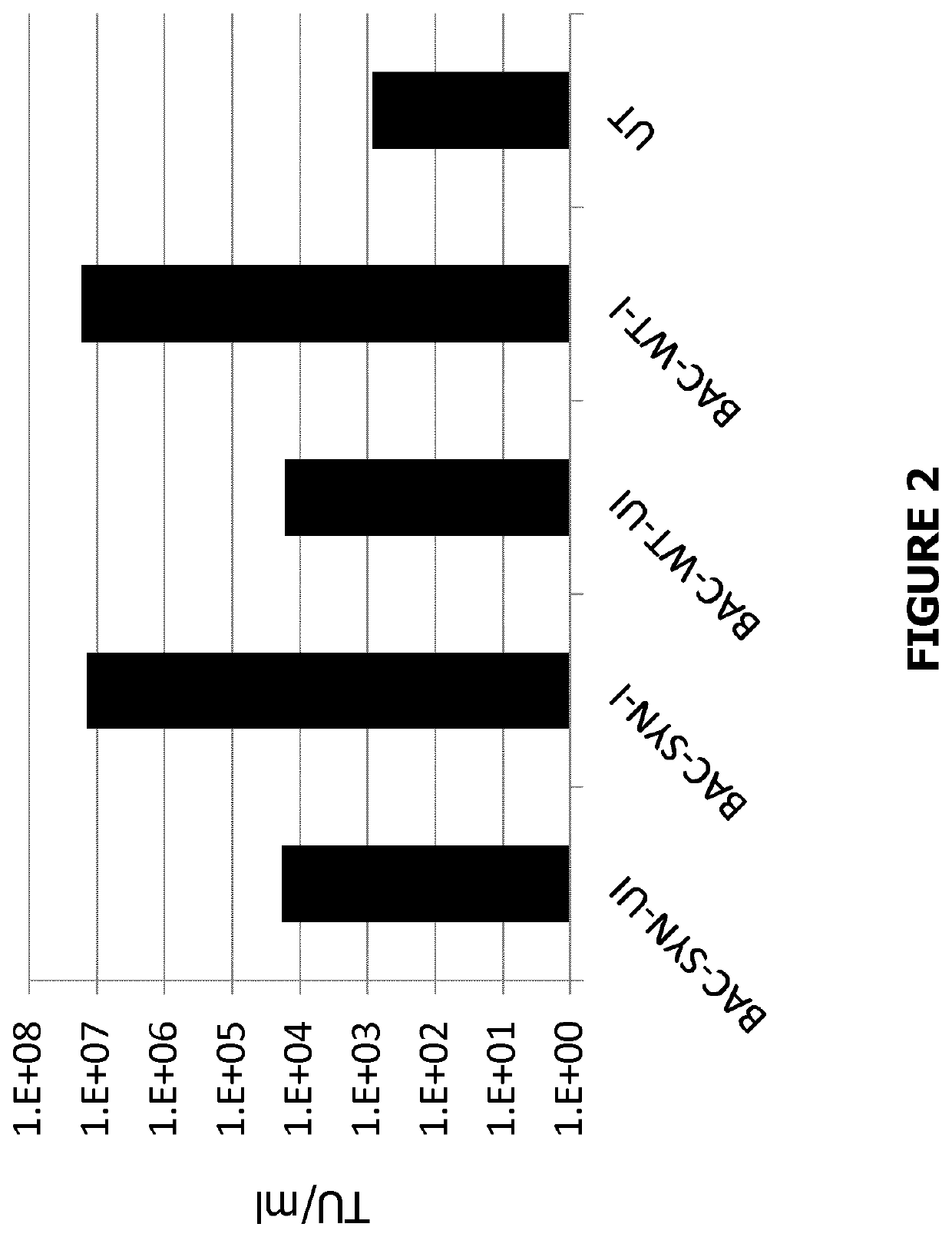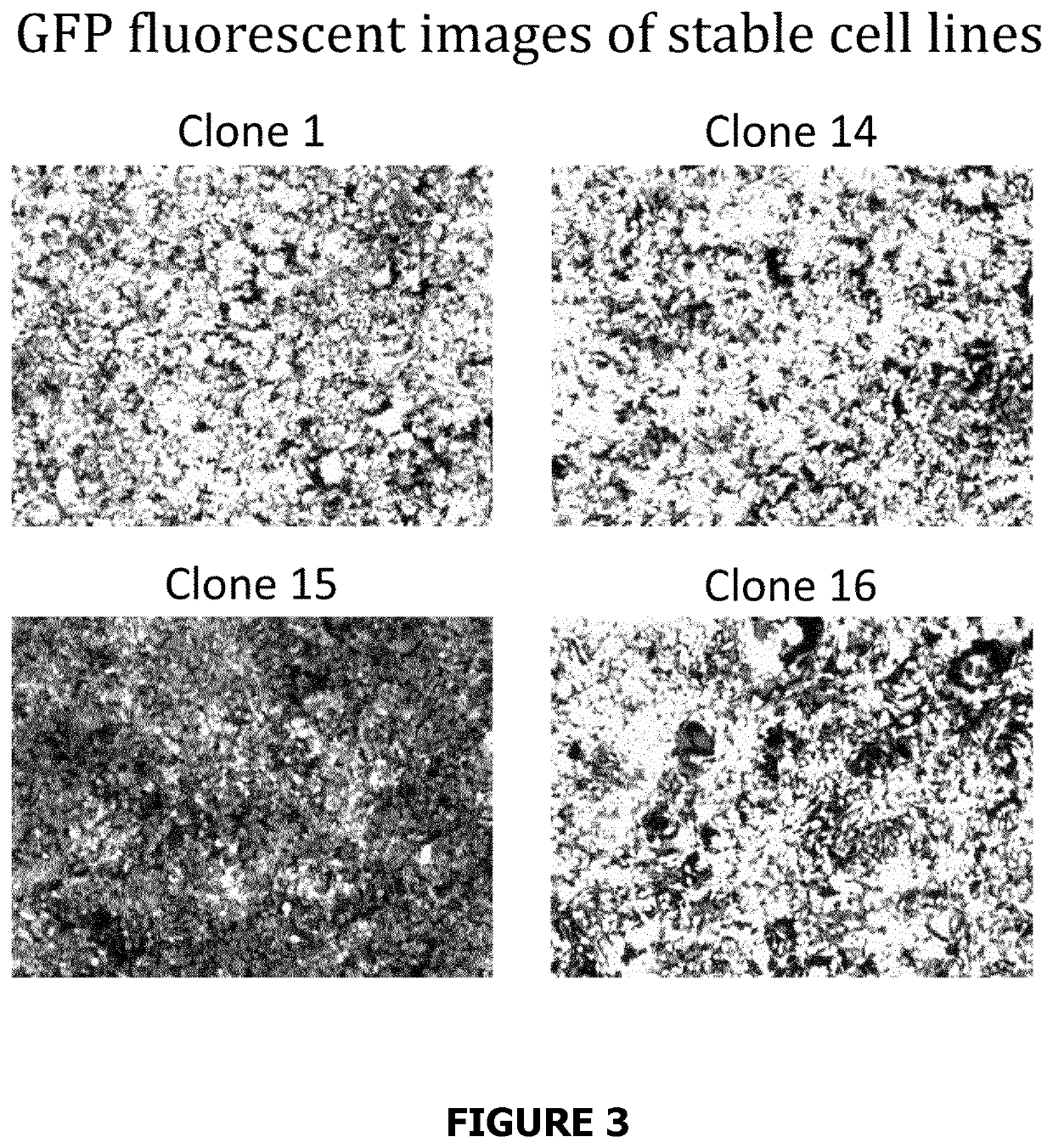Stable cell lines for retroviral production
a cell line and retroviral technology, applied in the field of nucleic acid vectors, to achieve the effect of reducing selection pressure and silencing timeframe, facilitating use, and speeding up screening
- Summary
- Abstract
- Description
- Claims
- Application Information
AI Technical Summary
Benefits of technology
Problems solved by technology
Method used
Image
Examples
example 1
Guide (BAC)
[0222]FIG. 1 shows a stepwise guide to the construction of BACpack-WTGP-277delU5 and BACpack-SYNGP-277delU5. Owing to the compatible ends of an XbaI and NheI digest, the lentiviral packaging genes were progressively loaded into the pSmart BAC vector. At the point of GagPol addition, 2 constructs were made containing either Wild type GagPol (WTGP) or the codon optimised GagPol, SYNGP. These were given the nomenclature of BACpack-WTGP and of BACpack-SYNGP respectively. The transfer cassette was then loaded onto both of these constructs and so generating BACpackWTGP-277delU5 and BACpackSYNGP-277delU5.
example 2
of a Stable Polyclonal Pool
[0223]Polyclonal stable transfectant pools were generated by transfecting the adherent cell line, HEK293T, with BACpackSYNGP-277delU5 or BACpackWTGP-277delU5. Successful integration events were then selected for with Zeocin.
[0224]To assess the ability of these polyclonal pools to generate lentiviral vector, the cells were induced with Doxycycline (I) or left un-induced (UI) and compared to untransfected HEK293T cells.
[0225]The results show the titre in transduction units (TU) / mL, of the lentiviral vector supernatant harvested from each transfection condition. It can be seen from the titration results in FIG. 2 that the stable polyclonal pools, generated with either BACpackSYNGP-277delU5 or BACpackWTGP-277delU5 are capable of producing lentiviral vector at concentrations in region of 10e7 TU / mL which is comparable to the current transient transfection system.
[0226]The results confirm that the single BAC vector containing all of the packaging genes necessary...
example 3
g Stable Transfection Suspension Clones
[0227]The primary purpose of generating lentiviral vector producing cell lines using the BAC technology is to rapidly apply new advances to the platform. These advances are likely to include modification of specialist cell lines. For example, it is an industry standard to increase yield by producing biological products in suspension cells as they grow to greater densities than adherent cells. However, the current lentiviral vector production system relies on high transfection rates which are harder to achieve in suspension cells than adherent HEK293T cells. As transfection efficiency is less of a concern when generating a stable cell line due to the selection of successful integrants, the BAC construct is an ideal solution to generate lentiviral vector producing suspension cell lines.
[0228]As previously demonstrated, the BAC construct is capable of generating lentiviral vector producer cell lines from adherent HEK293T cells. To prove the flexib...
PUM
| Property | Measurement | Unit |
|---|---|---|
| doubling time | aaaaa | aaaaa |
| volume | aaaaa | aaaaa |
| volume | aaaaa | aaaaa |
Abstract
Description
Claims
Application Information
 Login to View More
Login to View More - R&D
- Intellectual Property
- Life Sciences
- Materials
- Tech Scout
- Unparalleled Data Quality
- Higher Quality Content
- 60% Fewer Hallucinations
Browse by: Latest US Patents, China's latest patents, Technical Efficacy Thesaurus, Application Domain, Technology Topic, Popular Technical Reports.
© 2025 PatSnap. All rights reserved.Legal|Privacy policy|Modern Slavery Act Transparency Statement|Sitemap|About US| Contact US: help@patsnap.com



